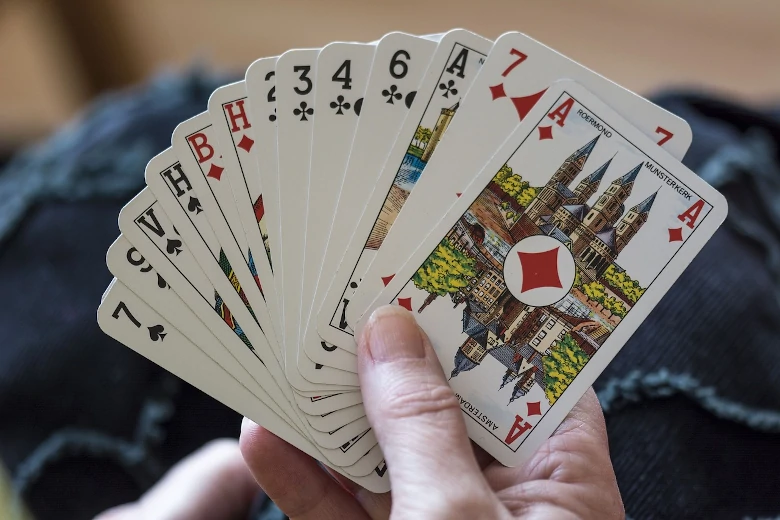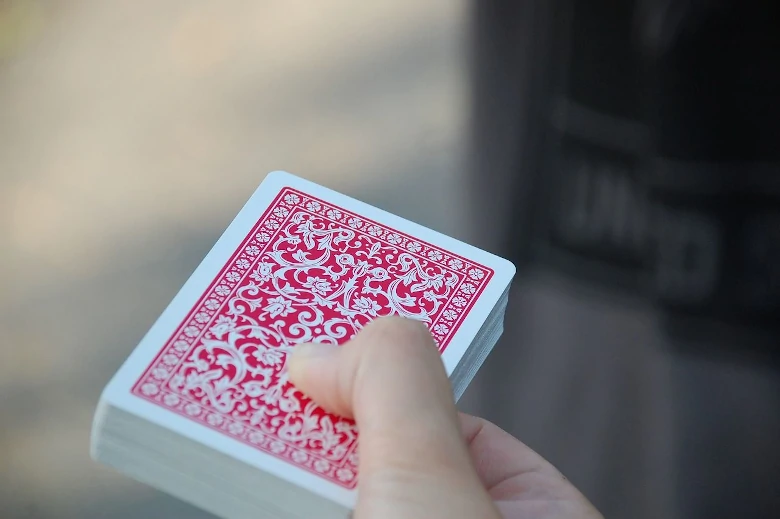These 3 cool Maths card games can help your child ace PSLE
- Tags:
- Primary Maths

Many children are afraid of Maths, but we can help them overcome their fear by explaining difficult concepts through play. That's why we came up with the coolest Maths games you can teach your child to help them do well in PSLE.
Game 1: Fastest Fractions
This is a two-player game designed to help kids learn about fractions. You can make this a four-player game by using two decks of cards instead of one.
(P.S. If you're trying to teach your child fractions, you can use our free notes on the subject, which have been compiled by our Geniebook Maths teachers.)
Rules
Each card's value is equal to the number printed on it. This means that a 4 of hearts, spades, diamonds, or clubs is worth "4", a 6 is worth "6," and so on. The value of an ace will be "1".
This game will have the following rounds:
Goal for round 1: \(\displaystyle{0}\)
Goal for round 2: \(\displaystyle{\frac{1}{4}}\)
Goal for round 3: \(\displaystyle{\frac{1}{3}}\)
Goal for round 4: \(\displaystyle{\frac{1}{2}}\)
Goal for round 5: \(\displaystyle{1}\)
Goal for round 6: \(\displaystyle{2}\)
Goal for round 7: \(\displaystyle{\frac{2}{3}}\)
Goal for round 8: \(\displaystyle{3}\)
…and so on.
Each player's goal is to create fractions that are closest to the number chosen for that round. For example, in the first round, players will try to make fractions that are as close to zero as possible, and in round two, they'll try to make fractions that are as close to 1/4 as possible.
Setting up the game
To begin, discard the joker, king, queen, and jack cards.
Now, properly shuffle the deck and deal 5 cards to each player.
Place the remaining cards face down on the table.
Begin playing the game
The person who dealt the cards starts the game.
They select a card from their deck and place it face up on the table. This will be the numerator of the fraction. After that, they will place another card face up directly beneath it. This will be the fraction's denominator.
So, if they place the ace of spades on top and the 4 of hearts beneath it, the fraction is 1/4.
They then draw two cards from the deck. And their turn comes to an end.
Player 2 will now select their numerator card and place it next to the fraction of player one. They will place their denominator card beneath their numerator card. They will thus have their own fraction.
Next, they draw two new cards from the deck, and their turn is over.
This also marks the conclusion of round 1.
Let's say player 2 played 3 of clubs as numerator and 3 of spades as denominator. This means the result of their fraction is zero, which was their goal, and player 2 wins this round.
Alternatively, if they had played an ace of clubs as numerator and a 2 of spades as denominator, their fraction would be 1/2. Player 1 now wins because 1/4 is closer to 0 than 1/2.
Place all four played cards at the bottom of the pile to begin the next round. The next round's goal is to form a fraction that is closest to 1/4. And so on…
The players decide how long the game will last. They can choose to play best of two, best of three, or whatever they both agree on.

Game 2. Fishing for 10
This game is similar to 'Go Fish' and is great for practising addition.
If your child is having trouble understanding addition, check out this great free resource on addition within 10.
Rules
Take the jokers, kings, queens, and jack out of the deck.
The ace will be worth 1, and the others will be worth the number on the card.
Shuffle the deck and deal 5 cards to each player. Place the remaining cards face down on the table.
The goal is to create pairs of two cards whose sum equals 10.
For example, 8+2, 6+4, and so on.
Begin playing the game
All players look for any pairs they can make from the five cards they were dealt.
Remove these pairs from your deck and place them face down in front of you.
Take the same number of cards from the remaining card deck. Each player should have 5 cards in their hands.
Everyone examines the cards to see if they can form any pairs. If possible, they separate these pairs and place them face down in front of them before drawing from the deck again. Continue until all players have 5 cards that they can’t make pairs out of.
Once all players have completed this, it's time to begin asking questions.
Player one now examines their cards to see which number will help them make a pair. So, if they have a 6, they can request a 4 from player two to make a pair of 10 (6+4).
If player two has a 4, they pass it to player one, who makes a pair and places it face down on the table.
If player two doesn't have a 4, they say "Go Fish". In this case, player one can take the top card from the stack of cards in the middle of the table. If they can make a pair with that card, they place both cards on the table; if not, they do nothing.
It's now player two's turn. Player two may request a card from player one. If player one has that card, they give it to player two; otherwise, they say "Go fish," and player two draws the first card from the deck.
The game continues until all of the cards from the middle deck have been played. And the player who has the most correct pairs wins.

Game 3: Race to 100
This is an excellent game for teaching children addition and subtraction up to the number 100.
If you want to learn how to teach these concepts to your children, our teachers have provided a free resource here.
Rules
Shuffle the deck and place it face down on the table. If there are two players, use one deck; if there are four players, use two decks, and so on.
The value of each card is determined by the number printed on it. The ace will be 0, the jack will be 11, the queen will be 12, and the king will be 13.
The red cards (hearts and diamonds) have a positive value, while the black cards (clubs and spades) have a negative value.
Each player will need a notebook and a pen.
Begin playing the game
All players begin the game with 0 points.
The first player flips the first card and notes its value. The card will be kept on their side of the table.
The second player flips the next card and makes a note of its value.
The first player then flips another card and adds or subtracts the card value from the first card they received. Player two then follows suit.
The player who reaches 100 points first wins.
P.S. If you like playing Maths games, have you heard about Arena?
It's a new multi-player game where students between the ages of 7-12 answer Maths questions and win exciting prices. The best part is that the participants can choose the gift they like - some of which includes Roblux cards, 3D priniting pens, power banks, and more! So, what are you waiting for, start winning by clicking on this link.


 SG
SG  VN
VN 



















